Stop Sourdough Crust Going Soft After Cooling
This post may contain affiliate links.
Does your sourdough crust go soft after cooling? It feels great when you remove it from the oven, only to collapse once the sourdough has cooled.
Your sourdough crust goes soft after cooling because there is still too much moisture in your bread. The baking process should have removed this moisture, but if it's too short, the moisture remains in the crust and softens it as soon as the sourdough cools. The solution to this is to extend your baking time to ensure there isn't too much moisture left in the sourdough.
Some other sourdough issues which you may need solutions for include understanding when bulk fermentation is finished, how to diagnose under fermentation and how to strengthen your sourdough starter.
You can find the best bread knife for sourdough here, as well as my guide to slice sourdough perfectly here.
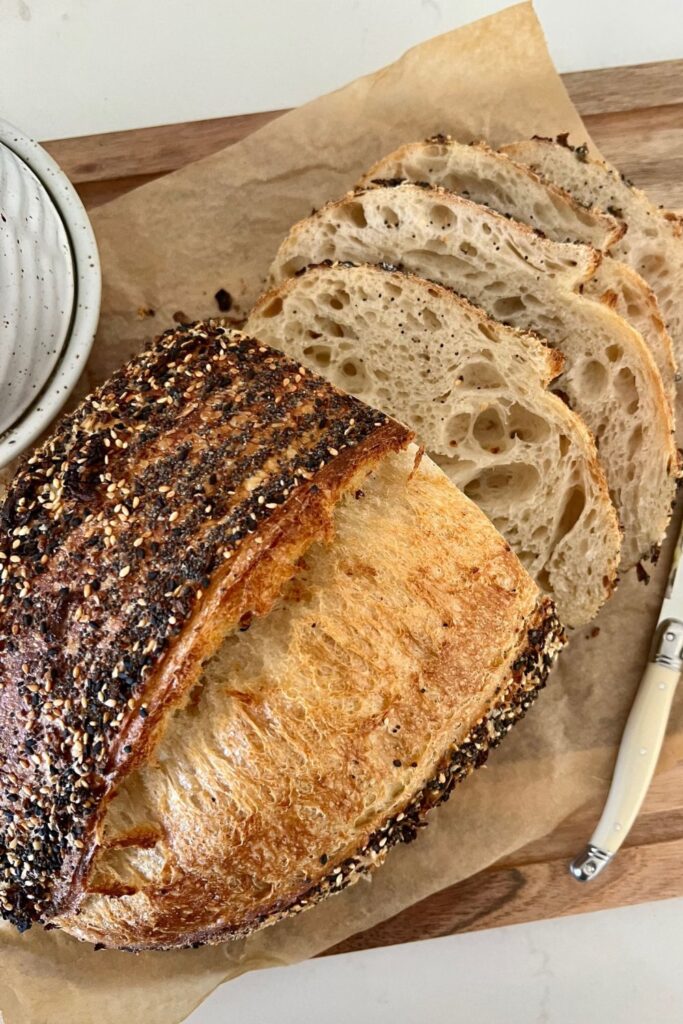
What Causes Sourdough To Collapse or Go Soft After Baking?
If you've just baked a crusty loaf of sourdough only to have it collapse or go soft and wrinkly after you allowed it to cool, you may have wondered what causes this problem?
When you bake sourdough (or any bread) the heat of the oven dries out the moisture in the crumb and crust as it bakes. Once the bread has finished baking, it will still contain some moisture, however if sufficient moisture hasn't escaped the crumb during the bake time, it will move outwards to the crust as the bread cools. This can cause the crumb to collapse and also soften the crust, weighing it down and further creating collapse.
It's really important to make sure that your sourdough is allowed adequate baking time to ensure adequate moisture escapes. You can read about how to know when sourdough bread is done here.
But there are also some other things you can do to ensure your sourdough bread stays crusty when you remove it from the oven.
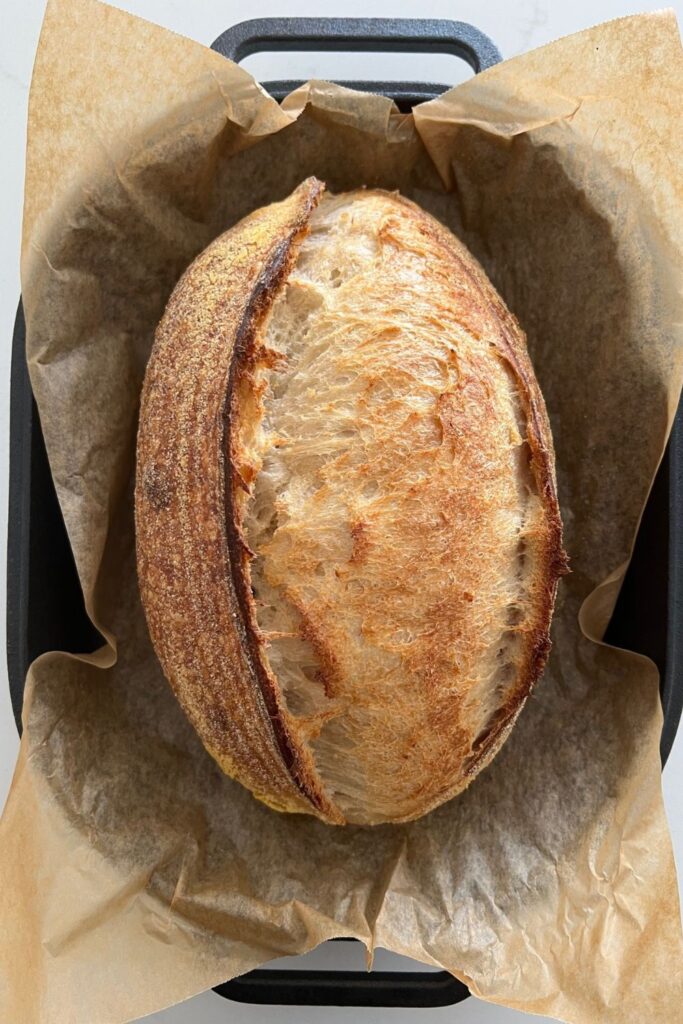
Oven Off Method For Crusty Sourdough
The easiest solution to stop sourdough crust going soft after its cooled is to make sure you bake it long enough. When checking if your sourdough is cooked, if the crust feels a little thin or you can still push down and feel give, return it to the oven for longer.
The easiest way to stop sourdough crust going soft after cooling is to turn the oven off and return the bread to the rack (out of the Dutch Oven if using) and let the bread sit in the turned off oven with the door slightly ajar.
Allow the bread to sit there until the oven is cold. The crust will then be set and neither the crumb nor crust will collapse when taken out.
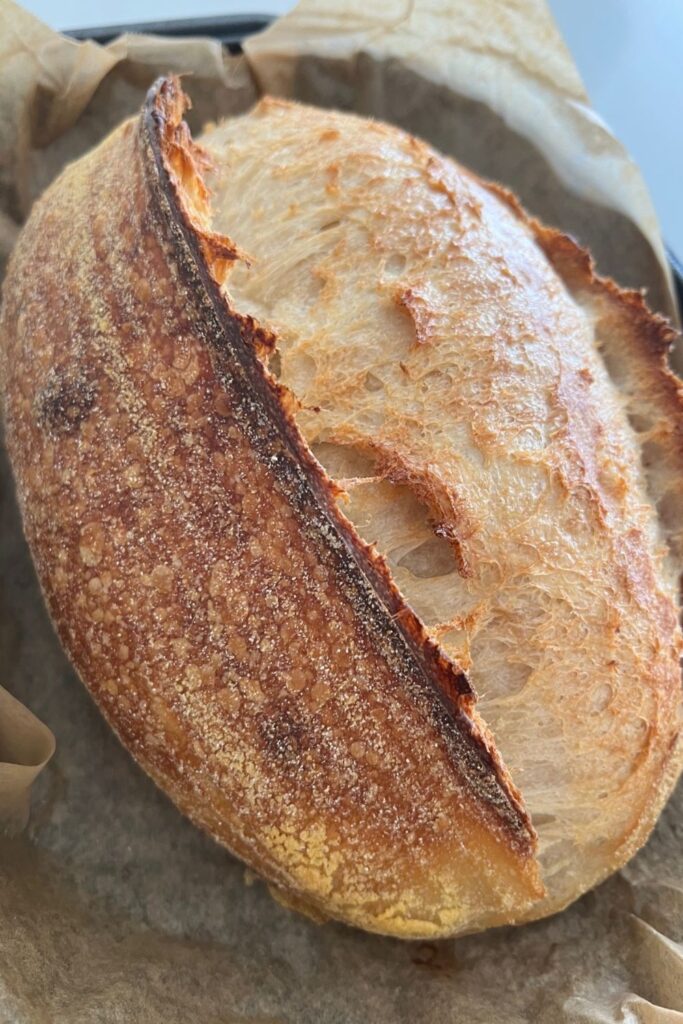
What Else Causes Sourdough Crust To Go Soft?
While we've explored that the main cause of sourdough going soft after baking is excess moisture remaining in the bread, there are a few other things that you can look at to ensure your sourdough crust doesn't go soft. These are:
- Gluten Development
- Fermentation
- Hydration
- Amount of yeast
- Shaping
- Cooling Time
Gluten Development
Gluten development in sourdough is extremely important - and not just for that beautiful open lacy crumb. If you don't have good gluten development, you may end up with sourdough that goes soft and collapses when you take it out of the oven.
The gluten network is the structure that holds all of the gas bubbles in place. Ensure you have a nice window pane after your stretch and folds are completed.
Ensuring you perform stretch and folds or coil folds, or even use a stand mixer to make your sourdough will ensure that your crumb structure is robust and will not collapse, even as the sourdough cools down.
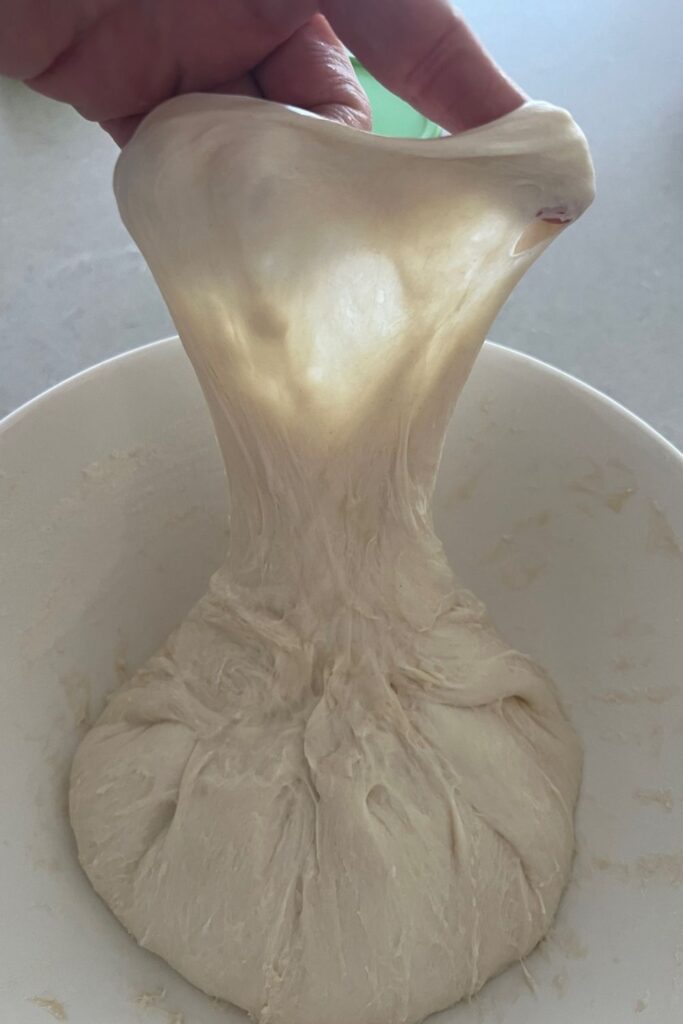
Fermentation Issues
Fermentation issues make up majority of the causes for sourdough bread. In this case, both under and over fermentation can cause your loaf to collapse as it cools down. However, under fermented sourdough generally causes more issues.
Fermentation really is the key to sourdough bread, since it's this time that allows the wild yeast to convert the starches in the flour to carbon dioxide gas, giving your sourdough rise.
Good fermentation means that the dough will not be too wet or too dry once the cooked sourdough has cooled down.
Hydration
The hydration level of your sourdough will have a baring on whether your loaf can stand up on its own once cool. If you are using a higher hydration recipe, you have a much higher chance that your loaf of sourdough will collapse after it's taken out of the oven.
This is because the higher water content means that there's more moisture that needs to "bake out" of the sourdough in the oven. If you take the sourdough out of the oven before this moisture has been removed, the crumb and crust will go soft once it's cooled.
Higher hydration sourdough can benefit from a longer baking time and from staying in the oven to cool down with the door ajar.
Amount of Yeast
Using increased amounts of sourdough starter or even adding commercial yeast to your sourdough bakes (like this sourdough discard sandwich loaf) can result in collapsed sourdough bread.
Using more than 100g of sourdough starter can increase the moisture in the dough, which means it may need a longer baking time.
Using less sourdough starter and a longer fermentation time can help to curb this issue if you ware seeing it repeatedly in your bakes.
Similarly, if you are having issues with sourdough discard bread collapsing, decrease the amount of commercial yeast you are adding to the dough.
Shaping
When shaping sourdough, it's important to ensure that you create a tight shape. Effective shaping creates a strong membrane or skin around your sourdough which holds in all those precious gas bubbles.
A strong membrane creates a strong crust during the baking process - and it's a robust crust that will not be weighed down by too much moisture as it escapes the crumb upon cooling.
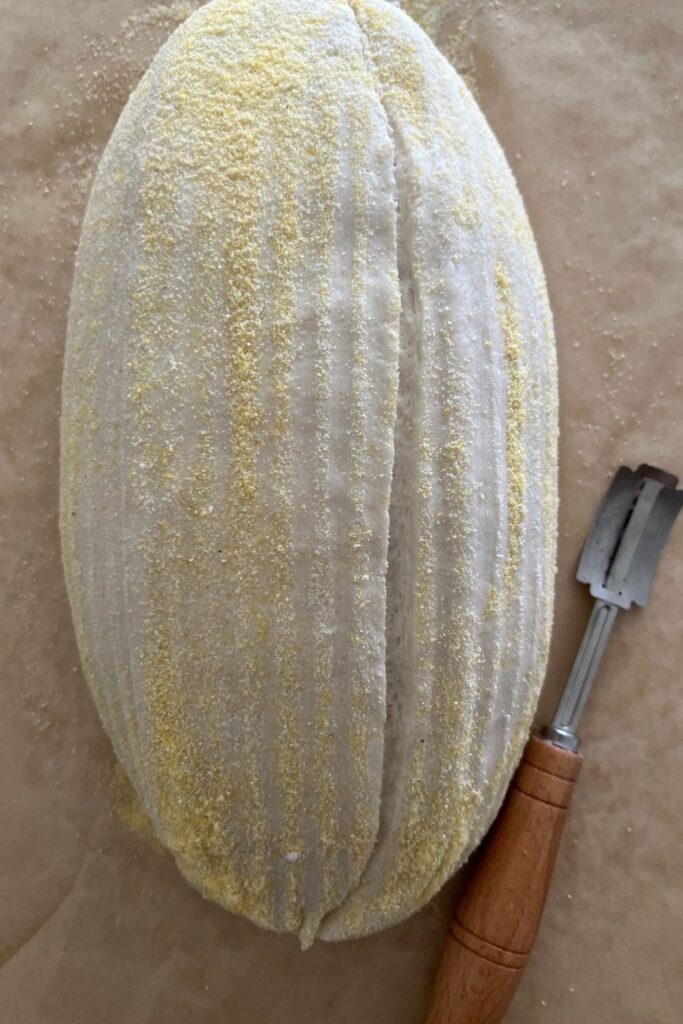
Cooling Time
Giving your loaf adequate time to cool and finish the cooking process can stop your sourdough from collapsing.
However, the caveat here is that if you have errors in any of the other factors mentioned above, they could still cause your loaf to collapse or wrinkle.
One of the best methods to prevent sourdough collapse is to leave it in the oven to cool (as explained above). 4 to 6 hours is adequate time to allow sourdough to cool to room temperature.
There is more information on the benefits of cooling time for sourdough here.
While many people say there should be no rules when it comes to sourdough, and you are of course free to eat your sourdough bread warm), you really will get a better loaf if you allow it adequate cooling time before slicing.
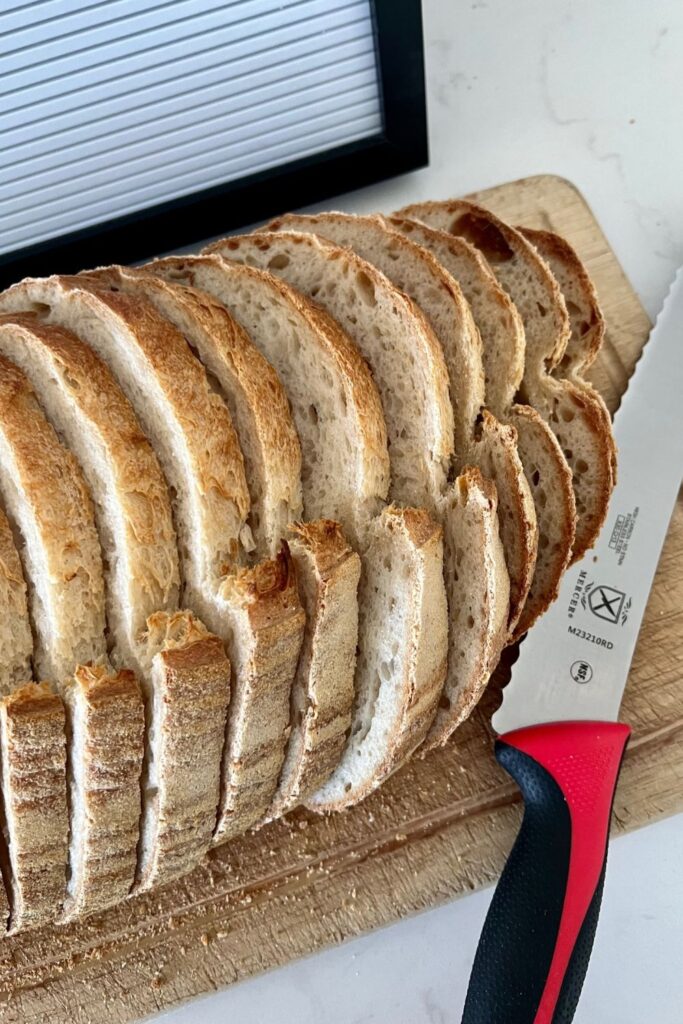
Why Does My Sourdough Bread Wrinkle When It Cools?
Sourdough bread wrinkles when it cools because excess moisture trapped in the crumb migrates to the crust, causing it to become heavy with moisture and as it cools and the moisture then evaporates from the crust, it wrinkles.
There's nothing wrong with the bread and it can still be enjoyed, it just won't look as good as it did when you first removed it from the oven.
How Long Should You Leave Sourdough To Cool?
It's best to leave your sourdough bread to cool for around 4 to 6 hours after removing from the oven. This gives the loaf adequate time to finish the cooking process and allow excess moisture in the crumb to move towards to crust. Cutting the sourdough when it's still hot will result in a gummy, wet interior as due to the steam trapped in the crumb.
I hope this article helps you to understand why your sourdough crust goes soft after baking and helps you to avoid crust collapse in the future.
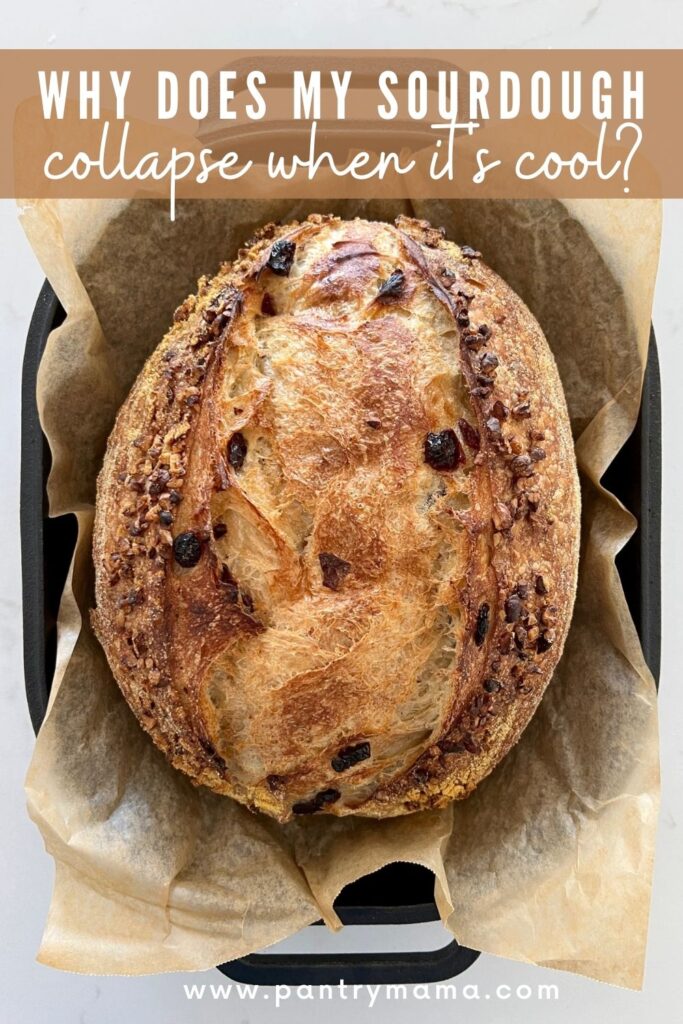


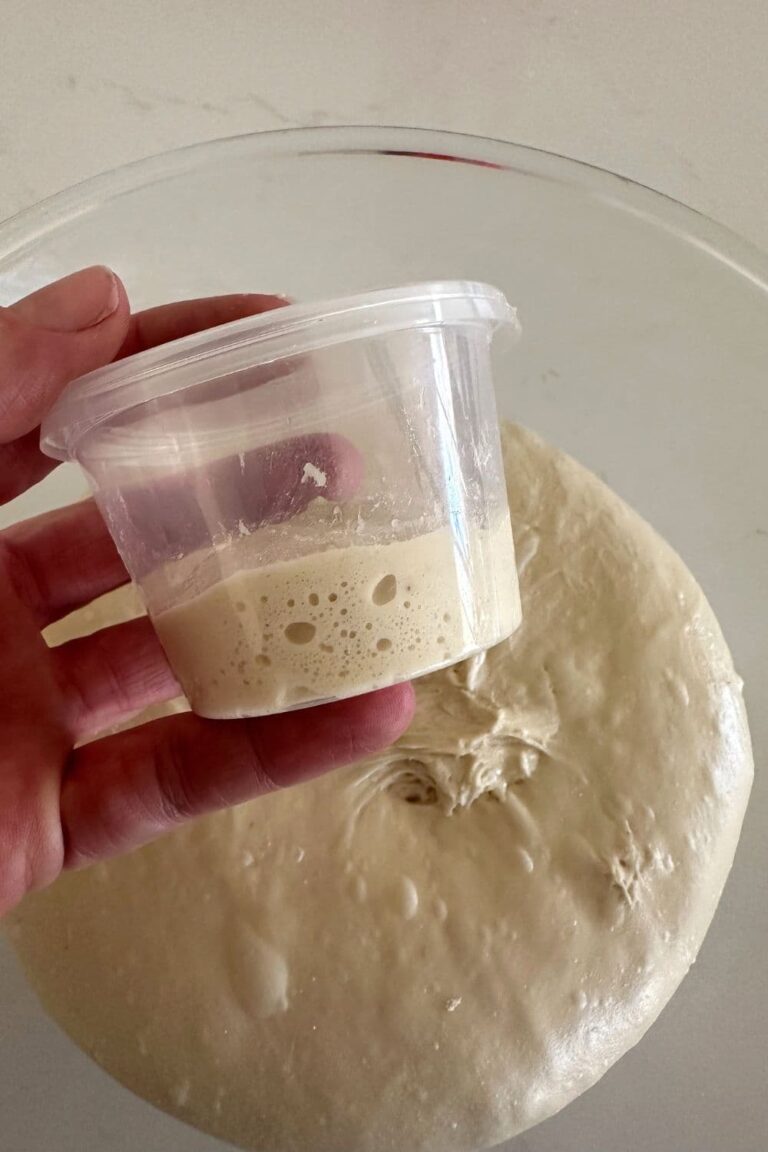
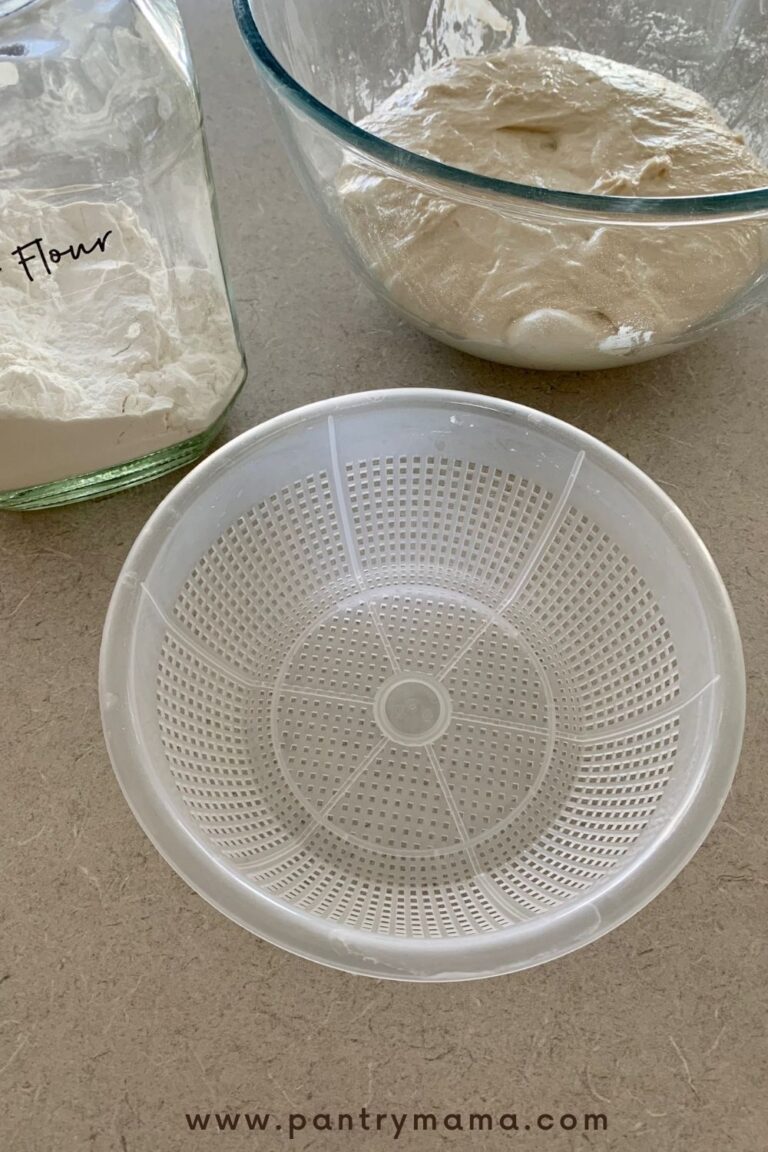
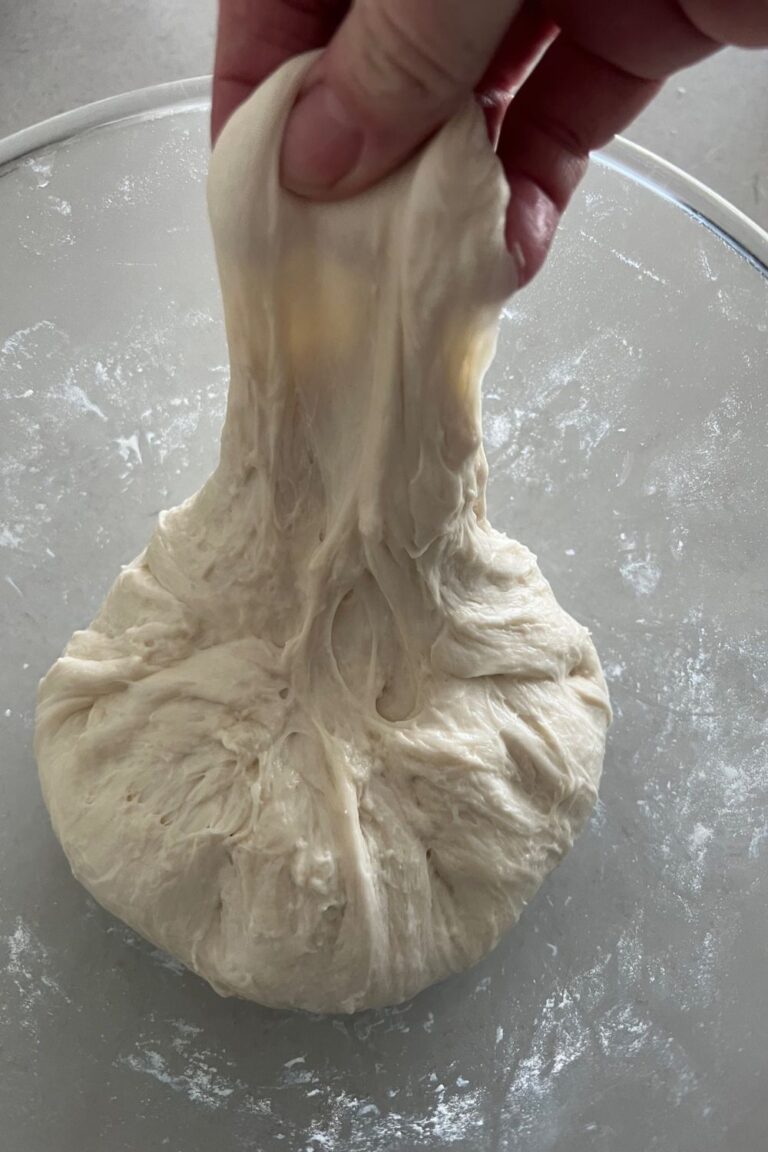
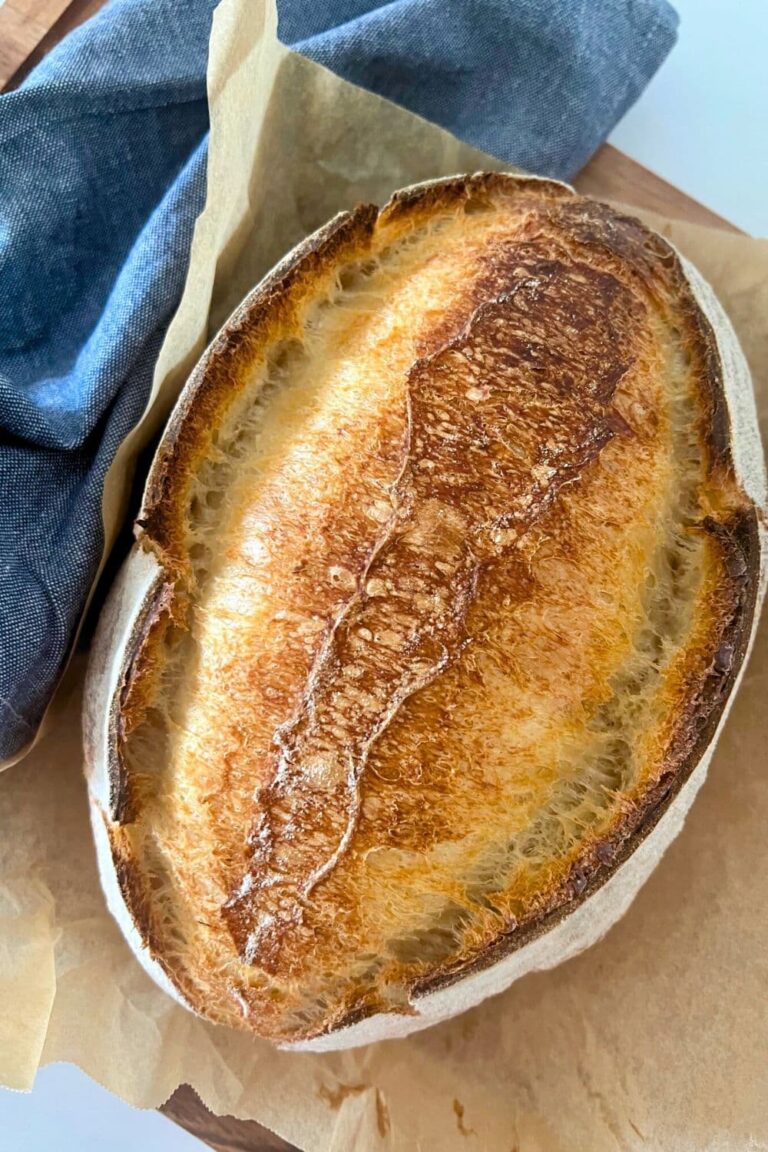

You offer so much excellent guidance and I truly appreciate you.
I’ve never had a collapse but I tend to under knead. Next bake, I’ll use a mixer and go for a good windowpane.
For bulk fermenting, I snip a few grams and put it into a clear spice bottle, tamp down to level the top, mark it a rubber band, set it beside the fermentation bowl, and when it doubles it’s properly fermented.
When in the proofing basket, I look for the top of the loaf to be 1-1/2 to 2 inches above the rim.
This is what works for me. My flour is quite expensive so I eat whatever comes put if the oven.
Steam helps form a good crust and internal baking as well. Moist sur conducts heat better than dry.
I’m stuck. My loaves look amazing. Cut great. Not gummy, great structure. Beautiful ear, great blistering. But for the life of me I can’t figure out why the bottom 1/3 of my loaves soften after cooling. Every dang time! The very bottom crust is dark golden brown…maybe a smidge too dark. Top is crackly beautiful. Occasionally I’ll have a big air pocket along the bottom edge. Whyyyy?! I read there’s too much moisture but wouldn’t I see that in other aspects of my loaf too? 🙁 I’m so thrilled with the recipe and process but this soft crust is making me nuts!
Thank you, Dave, it's so helpful to know all the little details that bakers notice and share. Do you find the 'little sample' is always an accurate indication of what the larger mass has done?
great suggestion on using a smaller jar to track your fermentation. I am going to try that with my next bake.
Thank you so much if I’m having a problem I put it into google search and always you have an article on how to solve it! Will give this a try next time!
For a longer baking time do you recommend it for the first bake with the lid on or the 2nd when we remove the lid?
If the loaf comes
Out crusty and then cools
and it turns soft , can you just stick the loaf back in the oven to crisp it up again? Or will it ruin the loaf?
Came here for this. Mine is back in the oven now. I'll leave it to cool in the off oven overnight and will report back if this actually works.
Mine firmed back up after just five mins in the oven! Fingers crossed it stays that way if I can dry it out enough.
Thank you, Dani! I'm curious how this turned out?